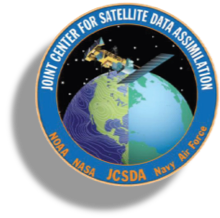Article by Dr. Wei Han, JCSDA OBS core team
Hyperspectral IR sounder data from U.S. (i.e., NASA’s AIRS and JPSS CrIS) and European (EUMETSAT’s IASI) sensors has proven to be one of the biggest observational contributors to improved model forecast skill at national and international operational Numerical Weather Prediction (NWP) centers. With the launch of Meteosat Third Generation planned in 2022, NOAA will have access to data from hyperspectral infrared sounders on future European geostationary satellite systems. The chinese Geostationary Interferometric Infrared Sounder (GIIRS) instrument has a spectral resolution in the thermal infrared that matches the JPSS CrIS sensors on S-NPP and NOAA-20, providing ample opportunity to develop and test methods to exploit this class of data for NWP applications.
In October 2019, the JCSDA launched a collaboration with the Space Science and Engineering Center (SSEC) at the University of Wisconsin to support the assimilation of geostationary hyperspectral infrared data in the Joint Effort for Data assimilation Integration (JEDI) framework. Dr. Wei Han is a core JCSDA staff member who works at SSEC in Madison, Wisconsin. He is engaged with JEDI development for this new type of geostationary hyperspectral infrared sounder.
The GIIRS Level 1 radiance data from FY4A satellite is received and processed at SSEC in near real-time to create quality controlled radiance products in NetCDF format. The GIIRS observations have been integrated into the JEDI framework, including preprocessing via its Interface for Observation Data Access (IODA), the observation operator using CRTM, and quality control through JEDI filters. The differences between observations and simulations are calculated on SSEC high performance clusters in near real-time since September 1, 2020. This constitutes a major achievement resulting from close cooperation between JCSDA and SSEC on data assimilation and calibration quality assessment.
To view GIIRS FY4A monitoring, please visit the Applications tab for NRT Observation Monitoring.

